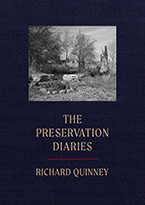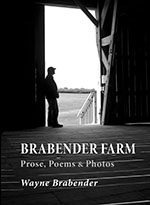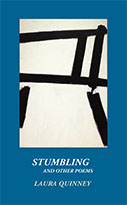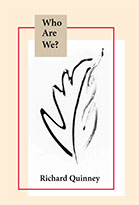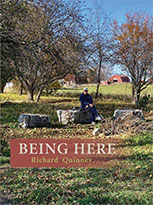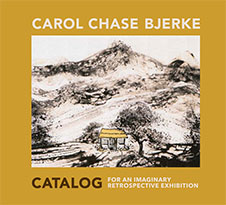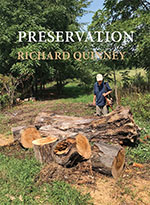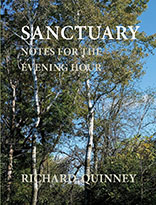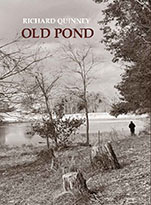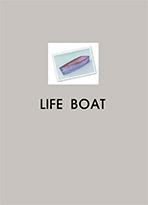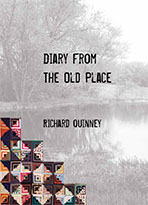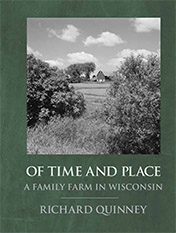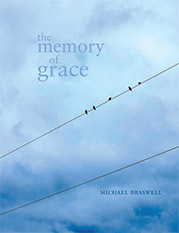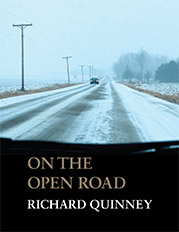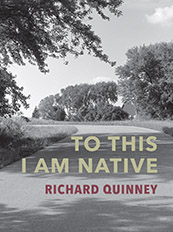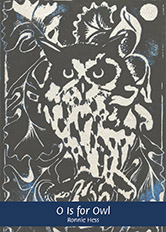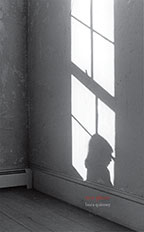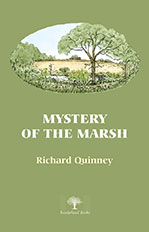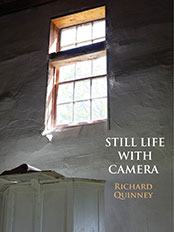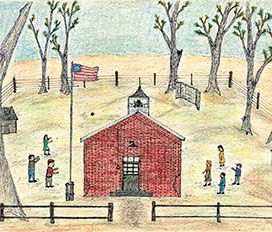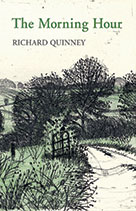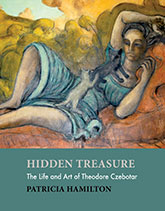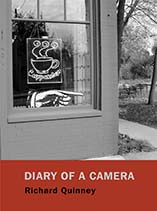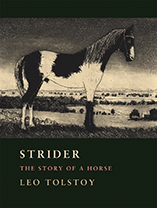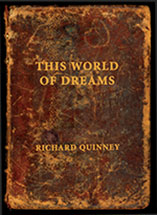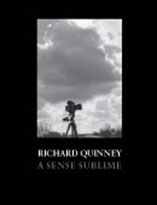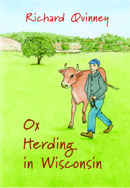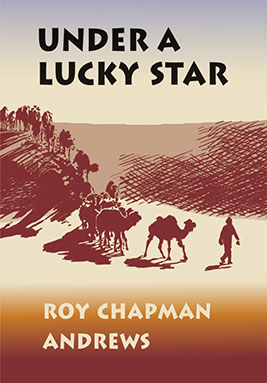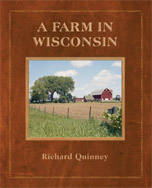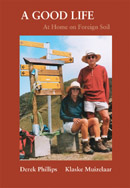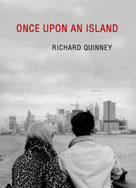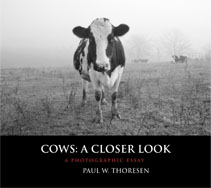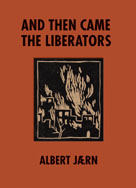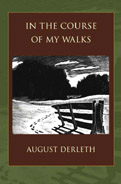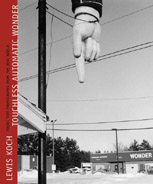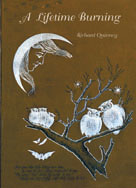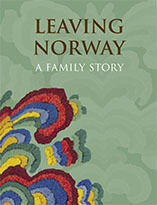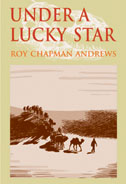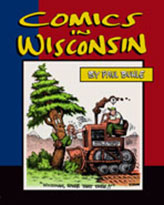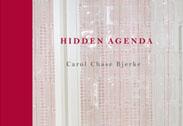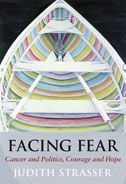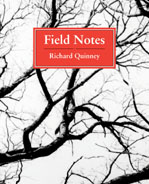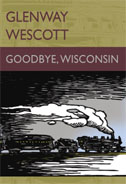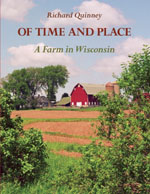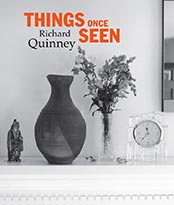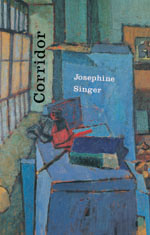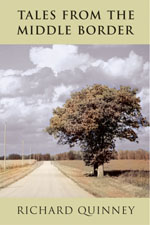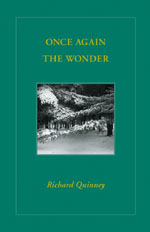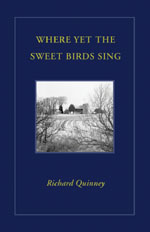
The following books have been produced and published by Borderland Books, an independent press, since founding by Richard Quinney in 2005. The books are available on Amazon and ABE Books, or they can be ordered from Borderland Books. Listed are the books from most recent to the beginning:
The Preservation Diaries
by Richard Quinney
I began writing a series of diaries that stretched from the first days of the year 2018 and concluded at the end of 2022. The accumulation of entries documents five years of preserving the Old Place, the original home site of my great grandparents and the subsequent generations.These few acres are what remain of our family farm. In the preservation, there is the memorial to the lives of those that make their lives on the farm.Brabender Farm
by Wayne Brabender
Brabender Farm is a collection of 12 essays, more than 80 photographs, and over 100 poems that pays homage to Wayne Brabender’s great grandparents who started the family’s 120-acre farm in 1858 in Ashton, Wisconsin. It also honors the Ho-Chunk, who dwelled there before Wayne's ancestors, and the generations of family and neighbors who followed.Stumbling and Other Poems
by Laura Quinney
Most poets recollect or describe the present. In her third book of poems, Laura Quinney (whose “superbly spare meditations” Harold Bloom compared to the poetry of Paul Celan and Emily Dickinson) does something more uncanny: recalling what it once was like to anticipate the future, she remembers what she thought the past would look like from the present moment, and in so doing deepens the meaning of memory.Who Are We?
by Richard Quinney
How we have lived, and continue to live, with a consciousness of who we are is my daily concern at this time in my life. In recent years I have thought about this self of mine, wondering about its creation and manifestation over the years.Being Here
by Richard Quinney
Quantum theory is altering our conventional ideas about the nature of reality. Being here, on Earth, is examined in the course of our daily living. We are gaining new understanding of human consciousness and our relation to all other forms of life.Catalog For An Imaginary Retrospective Exhibition
by Carol Chase Bjerke
Carol Chase Bjerke, a visual artist, lived her formative years in New Hampshire before living in Michigan and Wisconsin. Her work was anchored in film photography and darkroom techniques, A love of mountains and rocks and walls was manifest in her photography and hand-made books.
Preservation
by Richard Quinney
We keep watch from the wooded ridge at the Old Place. And ask the essential question: What is life? And its corollary: What is it like to be alive? Especially to be alive from the human perspective, with the conscious awareness that life is being lived.
Sanctuary
by Richard Quinney
The year of the pandemic has been a challenge in diverse ways to people throughout the world. Here in Wisconsin a source of solace has been the time spent at the Old Place.
Old Pond
by Richard Quinney
Over the course of the year 2019, observations are made and examined. Weekly travels are made to the pond for exploration, meditation, and the taking of a few photographs. “The house on the hill, where I sit and meditate, exists no longer. Memories exist, merging time past, present, and future. All is here, as I look into the pond at the Old Place.”
Life Boat
by Carol Chase Bjerke
The original art featured in Life Boat is Part One of Carol Chase Bjerke’s “Art and Healing” trilogy done in response to her experiences with cancer diagnosis and treatment. The rowboat metaphor in these photo-based mixed media prints and collages deftly and thoughtfully recounts the process of making one’s way through uncharted waters.
Diary From The Old Place
by Richard Quinney
I would stand by the barn and look across the field to the place where generations of my family had lived. This was my earliest memory and the continuing vision throughout my life. It is what I imagine when I wake in the morning and remember when I lay me down to sleep. I knew when very young that something of great importance had happened there, in the distance. All my life I have called it the Old Place.
Of Time and Place: A Family Farm in Wisconsin
by Richard Quinney
Of Time and Place is Richard Quinney’s celebration of—and elegy for—the family farm first settled by his great-grandparents fleeing the potato famine in Ireland. It is the farm of his birth and early years. This is the story of the several generations that lived on these few acres of rolling hills and wetlands in the southeast corner of Wisconsin.
The Memory of Grace
by Michael Braswell
The Memory of Grace explores the thoughts and stories of thinkers and doers throughout the ages as a way of experiencing the grace that comes from learning into wisdom, a way that can encourage us to live more meaningful and complete lives. From cultivating a beginner’s mind to embracing the big Mystery to seeking ways to serve others, timeless truths both cajole and encourage us to keep trying, no matter what the circumstance.
On the Open Road
by Richard Quinney
Each day is a journey that is traveled on the open road. Richard Quinney started making field notes as the new year began. Combined with the writing, he photographed the things to which he gave attention. The year was an open road of changes and uncharted adventures. The family farm of four generations was sold, and he experienced the loss that comes with trying to hold on to what inevitably changes and vanishes forever.
To This I Am Native
by Richard Quinney
The photographs are what remain of the life that once was on the Quinney family farm in Wisconsin. The objects portrayed in the photographs have an afterlife, a life for the seeing, a life different from their original purpose and function in a former time. The objects may be gone, the landscapes may be altered or have disappeared, but the photographs and the few words written about them and the experience of photographing remain, until they too vanish.
O is for Owl
by Ronnie Hess
In this small, even intimate collection, Ronnie Hess has written a series of love poems about—owls. From “First Owl,” to the last poem in the book, “Married to an Owl,” Hess describes, sometimes humorously, her growing awareness of these birds, her infatuation with them, and the lessons she ultimately takes away from them.
New Ghosts
by Laura Quinney
These poems live and move among images: beach, forest, fire, dark — and then among the images of images: hunger, shadow, regret. What is it to be an image, or to become an image, or to stay an image? Inward and intense, the poems together comprise an extended meditation on temporality: time’s effect on the sense of self, and the self’s effect on the sense of time.
Mystery of the Marsh
by Richard Quinney
A coming of age story, a tale of the mystery of the marsh on the family farm in Wisconsin. This little book is modeled after an early printing of John Greenleaf Whittier’s book of poems SnowBound. Clothbound with original art on the title page.
Still Life with Camera
by Richard Quinney
Explorations are made of this daily life over the course of a year. With camera in hand, and with notebook, the photographer/writer attends to what is seen and what is thought as the world appears. The imagination that is given and expanded, as William Blake noted, is of eternal consequence.
Sketches: A Childhood Remembered
by Richard Quinney
A book — for children and adults alike — of the remembrances of Richard Quinney growing up on the family farm in southeastern Wisconsin in the 1930s and 1940s. Charming color drawings illustrate his recollections of childhood events.
The Morning Hour
by Richard Quinney
In recent years, I have been thinking and writing about enlightenment (what it is and how we might experience it) and this world of dreams (the nature of reality as perceived daily). It has become imperative to me, in my eighty trips around the sun, to devote time to these essential concerns. – Richard Quinney
Hidden Treasure
by Patricia Hamilton
Hidden Treasure: The Life and Art of Theodore Czebotar examines the life and times of this compelling artist who turned away from the brush of early fame in Manhattan for a hidden life that offered the creative integrity and self-determination he required. The author is the artist’s niece and accessed personal papers, diaries and remembrances of remaining family and friends in addition to research material publicly available.
Diary of a Camera
by Richard Quinney
Diary of a Camera is Richard Quinney’s meditation on the art and history of photography. Printed in the tradition of fine art photography, the book features 173 black and white photographs by Quinney, each accompanied by a narrative vignette that provides a perspective on the history of photography and the changing technology of making visual images.
Strider: The Story of a Horse
by Leo Tolstoy
A rich, evocative tale in the voice of a horse by a master storyteller A small gem from Leo Tolstoy, this poignantly profound tale from the viewpoint of an old horse comments on such perennially human concerns as prejudice, fortune, and morality. The illustrations by printmaker Larry Welo were commissioned especially for this fine press edition.
This World of Dreams
by Richard Quinney
In This World of Dreams, a year passes as Quinney tells the stories that come, as in a dream, of things past, of the ancestors that once lived, and of the wonders of everyday life. The revels will end in this relative world of dreams. Yet the fruits of the year’s quest prompt thoughts, and more dreams, of an absolute realm beyond this dream world. For the time being, we are the keepers of the wonders of our existence.
A Sense Sublime
by Richard Quinney
“And I have felt / A presence that disturbs me with the joy / Of elevated thoughts; a sense sublime.”—William Wordsworth
A Sense Sublime is a record of a life lived during the last years of the twentieth century on the northern edge of the tallgrass prairies of Illinois where seas of flowing grasses give way to the glaciated hills of Wisconsin.
Ox Herding in Wisconsin
by Richard Quinney
"I know the writing that is good and severe discipline. Many times writing has been for me about the only discipline I had or needed, and it was good. In the telling of the story — in the writing — I have been able to consider carefully what I am experiencing in my life. Writing is a way to understand the experience, to learn from it, and a way to go on."
Under a Lucky Star
by Roy Chapman Andrews
Paperback Edition Foreword by Charles Gallenkamp, Afterword by Ann Bausum
“Andrews’ pioneering explorations in Mongolia greatly advanced science and archaeology; his life and adventures there, which Indiana Jones would envy, make this a welcome re-issue of a thrilling read.” – ForeWord Reviews
Under a Lucky Star is the autobiography—the lifetime of adventure—of the explorer and archaeologist Roy Chapman Andrews.
A Farm in Wisconsin
by Richard Quinney
This is the story of a farm in Walworth County, Wisconsin, that began with a few acres in 1868 and grew to a 160-acre family farm. Over many years it supported and provided the rich background for four generations. Told from the perspectives of the descendants of Irish, English, and Scottish emigrants, as revealed in letters, diaries, photographs, and documents, this unique book offers a moving portrait of the life on this Wisconsin farm.
A Good Life
by Derek Phillips and Klaske Muizelaar
This is the touching memoir of Derek Phillips and Klaske Muizelaar, and the life of love and travel they shared together. Derek, an American, had been living in Amsterdam since 1971. Klaske, born in the north of the Netherlands, had been there since 1972. Their life together centered on maintaining dignity, self-respect, and, most importantly, mutual love. At home in Amsterdam, they shared passions for work and reading, good food, music, art, walking, and travel.
Once Upon an Island
by Richard Quinney
As the decade of the 1960s drew to a close, Richard Quinney walked the streets of Manhattan with camera in hand, documenting the life of the city. For forty years, as he relocated from one place to another, the photographs he had taken in Manhattan went with him. After the events of September 11, 2001, the photographic images acquired a meaning and significance beyond anything he could have imagined. Once Upon an Island contains 175 photographs of Manhattan, including color photographs of the construction of the World Trade Center.
Smoke Damage
by Michael Schwalbe
Tobacco use causes over 440,000 premature deaths every year in the United States, or about 20 percent of all annual mortality in the nation. Such statistics remind us of the enormity of the problem, yet offer no insight into how tobacco-related disease is experienced by individuals and their families.
Smoke Damage fills this gap by putting a human face on America's most profitable and most preventable epidemic.
Cows: A Closer Look
by Paul Thoresen
Dairy cows. An integral element of rural American and notably Wisconsin heritage and identity. Yet our appreciation of these bovine beasts seldom extends beyond our knowing that they graze in fields and provide us with an array of cheeses and milk. Via the images of a photographic essay, fine art photographer Paul Thoresen explores the very essence of cows that exists beyond words. Cows are brought to light as individuals, as part of the social herd, as feminine/masculine and as tenants of the land.
And Then Came the Liberators
by Albert Jærn
Albert Jærn captures in words and woodcuts the atrocities and indignities Norwegians witnessed during their country's five year long occupation by Hitler's forces, 1940–1945. Jærn (1893–1949) worked as a book illustrator for Aschehoug, a well-known publishing house, where he also produced the cover art for some 500 books. As in this wartime diary, Jærn favored block cuts of wood or linoleum. In simplified lines and surfaces, free of affectation or exaggeration, he captured the point he wished to communicate and managed to make something new each time.
In the Course of My Walks
by August Derleth
Edited by Richard Quinney
August Derleth lived all of his life in Sauk City, Wisconsin, a source of inspiration and substance for his vast range of writing, including In the Course of My Walks. While exploring the meaning of the lives of the men and women in the village on the banks of the Wisconsin River, the natural background—fields, woods, plants, marshes, water, and the wild creatures of the land and sky—was ever present in his writing.
Touchless Automatic Wonder: Found Text Photographs from the Real World
by Lewis Koch
Created as a poetic and visual journey, Touchless Automatic Wonder spans twenty-five years and four continents. These striking photographs capture "found text": the sometimes mysterious, occasionally humorous, often cryptic presence of words in the everyday landscape. This intriguing approach at the intersection of language, image, and the social landscape will appeal to readers interested in contemporary art and photography, popular culture, and conceptual concerns both literary and visual.
A Lifetime Burning
by Richard Quinney
In the attic were the spinning wheel, baby beds, quilts, the cradle scythe, framed paintings and photographs, sets of dishes and silverware, and the rosary beads that served the author's great-grandmother for a lifetime. The basement held tools, sleds, milk cans, barn jackets, canning jars, and the workbench. On the front porch were the emigration trunks that contained scrapbooks, photographs, farm ledgers, diaries, and souvenirs. The cupboards, dressers, and closets were filled with the material things—of parents and children—from the years of the living.
Leaving Norway
by Solveig Astrid Schavland
On the day Solveig Schavaland was born, June 9, 1940, German troups invaded Norway. Shortly after the war ended in 1945, the Schavland family immigrated to the United States. A half century later Solveig decided to write a family history, a memoir of a Norwegian family, from ancestors in Norway to the life of the family that immigrated and made their home in the United States.
Under a Lucky Star
by Roy Chapman Andrews
Under a Lucky Star is the autobiography—the lifetime of adventure—of the explorer Roy Chapman Andrews (1884–1960). Adored by the public and pursued by the press, Andrews came as close to superstar status as any explorer in the twentieth century. Much of Under a Lucky Star focuses on his grandest adventure, the legendary Central Asiatic Expeditions. This series of five daring journeys into uncharted expanses of the Gobi Desert produced a previously unsuspected treasure-trove of dinosaur remains.
Comics in Wisconsin
by Paul Buhle
From "Gasoline Alley" to Lynda Barry and beyond, a tradition of comic artists in Wisconsin.
Who knew? Wisconsin comic artists, editors, and publishers have made both central and fringe contributions to the language, form, and content of comic strips, comic books, and other forms of this popular art. Paul Buhle traces this history, illustrated by more than two hundred reproductions.
Hidden Agenda
by Carol Chase Bjerke
by Judith Strasser "We are all going to die. The real question, the question basic to confronting our fears, is how are we going to live." – from Facing Fear After the presidential campaign and election in 2004, Judith Strasser set out to investigate the nature of fear and its widespread use as a political campaign strategy. After flying to Seattle to conduct research for her study of political fear, Strasser returned home to a diagnosis of stomach cancer. Facing Fear traces Strasser's attempt to understand the nature of fear and anxiety and to regain control of a life threatened by a fatal disease.
by Richard Quinney For many naturalists, writers, and poets who followed, the boundaries between the animate and inanimate, the living and the dead, are ambiguous and arbitrary. In the moments when we grasp the essence and wonder of nature, we know that all things are in its domain, that we too are nature. Yet nature is not necessarily benevolent to our human interests. We are subject to the same forces that work in all of nature. Nature is the source of life as well as its destruction as new life is being created. With pen and camera in hand, between town and country, notes are made and a life is lived. One world at a time, here on earth.
by Glenway Wescott Wisconsin was still a wilderness in these early 1920s stories by Glenway Wescott (1901–1987). The distances between farms and small towns seemed great in those days. So was the struggle of social order and religion against the dangers of poverty, nature, and a stubborn streak of lawlessness. But the real adventure in these stories is in Wescott's deep understanding of human nature and his levels of meaning. His characters may be tragic, heroic, comic or inspiring, but if there is one theme here, it is the search for personal freedom.
by Richard Quinney When the house at the Old Place was torn down more than half century ago, the family photograph albums were carried up to the farmhouse. A few letters, some diary entries, and a scrapbook of obituaries survived to preserve a portion of the family history. Added to these materials, the author has drawn from the photographs of his mother's family, from the photographs made by his mother and father as they documented their young lives, and from the many photographs of the early years of the family.
This is the story of the several generations that once lived on these few acres of rolling hills and wetlands in a corner of southern Wisconsin.
by Richard Quinney This retrospective of photographs spans a period of forty years. Each photograph, each act of photographing, has been an attempt to stop time, to capture what is happening in the moment, and to preserve the moment for posterity. The photographer frames the subject, and seemingly gives witness to an order in the universe. But the photographer knows that, as Henri Cartier-Bresson has reminded us, nothing can really bring back the moment of things fixed in the photograph.
by Josephine Singer "Proverbs are true / but not quite / true enough." Josephine Singer writes in "The Surprises." This is not a proverb but the beginning of a poem. All of the poems in this book seek to say what is true enough, what is truer even than proverbs are. Singer's proverbial insight, like Kafka's, describes the reality behind things, in a spare and stark place that is not for us. Reality, like a poem, is a corridor between dark and dark, that leads at last to a "true recess," emptiness and void, "not a soul in sight."
See complete details by Richard Quinney The place is the middle border, the Midwest borderland remembered in the writings of Hamlin Garland. Richard Quinney's autobiographical essays begin with his birth and early years on the family farm in southern Wisconsin, continue through a lifetime of movement away from the farm, and document a return to the farm. Along the way, there are the tales of the years of living and writing in a prairie town across the border.
by Richard Quinney The place is the middle border, the Midwest borderland remembered in the writings of Hamlin Garland. Richard Quinney's autobiographical essays begin with his birth and early years on the family farm in southern Wisconsin, continue through a lifetime of movement away from the farm, and document a return to the farm. Along the way, there are the tales of the years of living and writing in a prairie town across the border. Part of the return of the native is a remembrance of his father and mother. In the most recent telling, Quinney is still moving between town and country. But it is always to the farm, the farm on the middle border, that he returns.
by Richard Quinney The year would be an odyssey. As the days passed, Richard Quinney kept a close watch-keeping a journal and taking photographs of the passing seasons on his family farm in Walworth County, Wisconsin. During the year the author, recently retired from a lifetime of university teaching, was being treated for chronic lymphocytic leukemia, and by year's end was moving from one place to another. The farm of the author's birth and growing up years was settled by his great-grandparents emigrating from Ireland during the famine. It is the place always returned to in times of need and solace. See complete details
Facing Fear
Field Notes
Goodbye Wisconsin
Of Time and Place: A Farm in Wisconsin
Things Once Seen
Corridor
Tales from the Middle Border
Once Again the Wonder
Where Yet the Sweet Birds Sing
